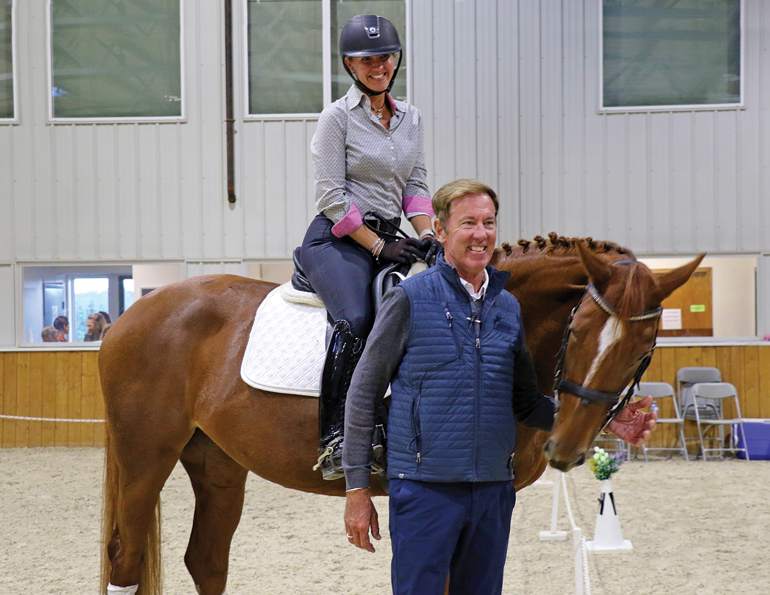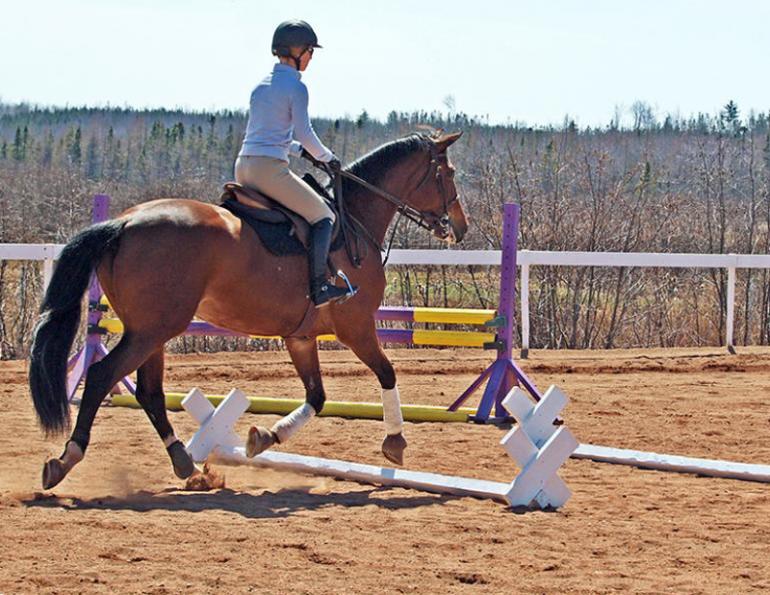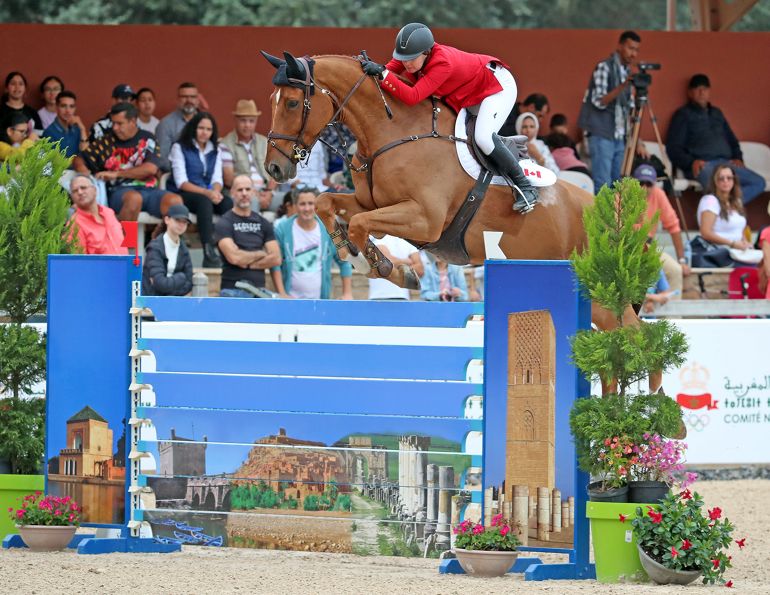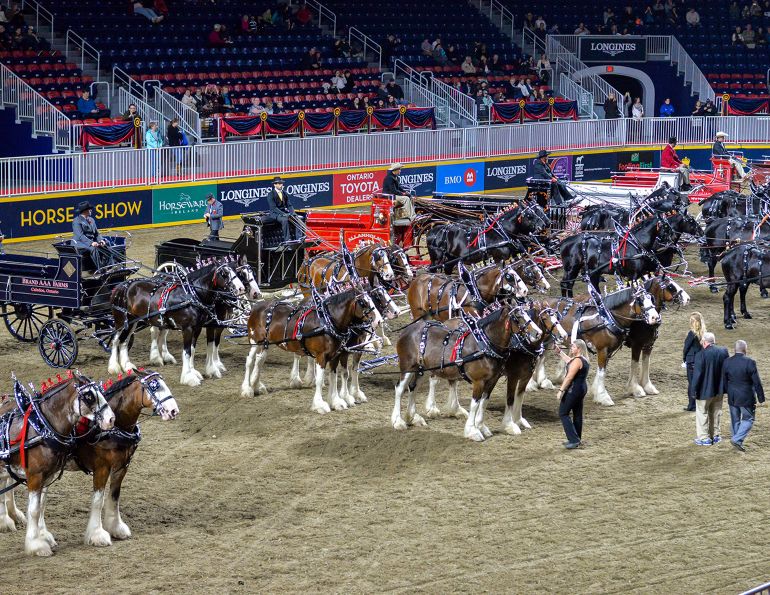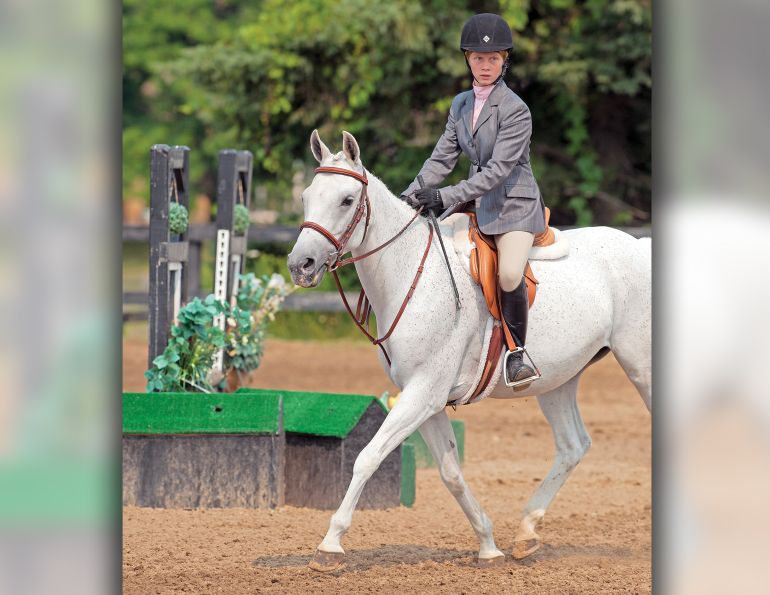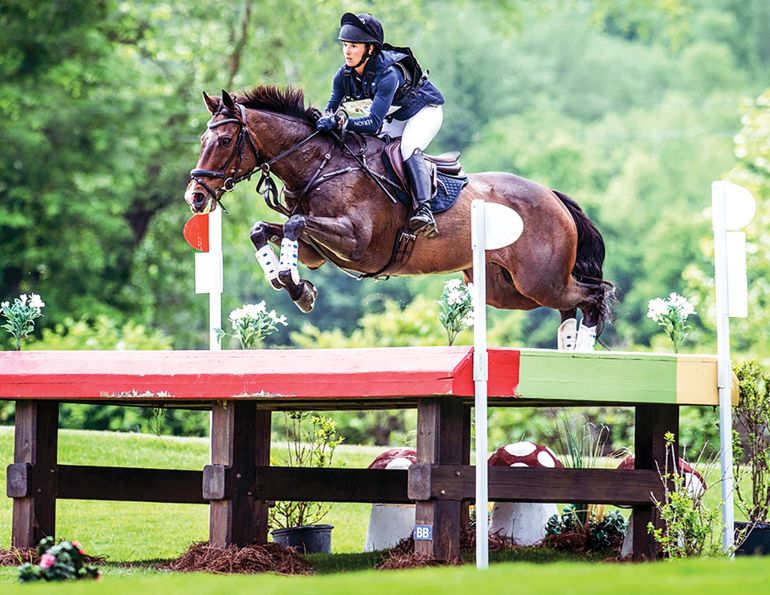Dressage is far more challenging than you think it is.
By Tania Millen, BSc, MJ
On September 23, 2022, the Canadian Eventing Development Foundation hosted a one-day dressage symposium with Peter Gray at Alborak Stable, west of Calgary, Alberta.
Gray is an a Fédération Équestre Internationale (FEI) 5* judge who was part of the ground jury at the 2022 Eventing World Championships in Pratoni, Italy. That means he was one of three dressage judges whose marks produced Michael Jung’s stunning 18.8 dressage score on FischerChipmunk FRH — the second-best dressage score in eventing world championship history.
“In Western Canada, it’s challenging to access upper-level instructors,” says Laurie Sutherland, the main organizer for the symposium. “But Peter has been to Alberta before and has a very strong grassroots philosophy.”
Along with Gray’s first-hand knowledge of what it takes to score exceptional dressage marks today, he competed in three-day eventing for Bermuda and Canada at three Olympic Games, two Worlds Championships, and a Pan-American Games. He also coached the Canadian Three-Day Eventing team from 1996 to 2000. Now focussed on dressage, he competes at Intermediare I and is a high-demand coach.
“I’m still in the sport because I love horses, training, and educating,” says Gray.
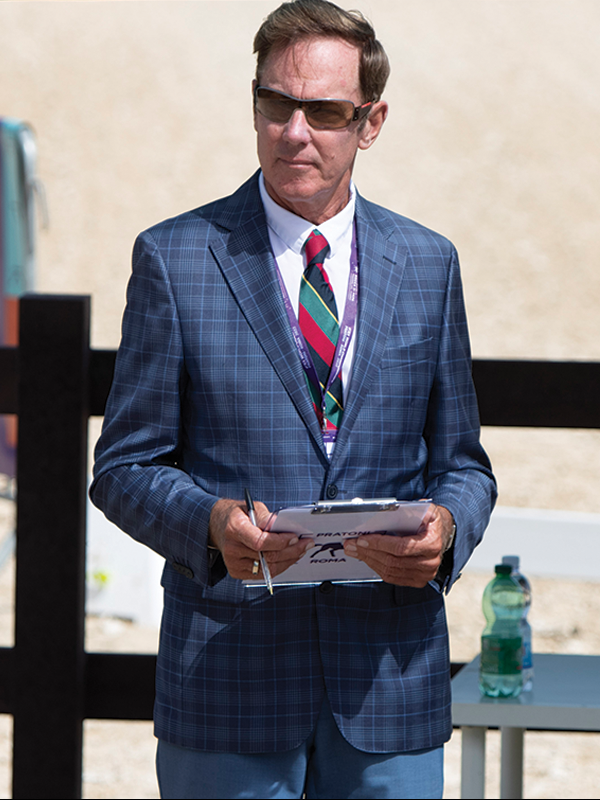
FEI 5* judge Peter Gray presented the one-day dressage symposium at Alborak Stable near Calgary, Alberta, which attracted 80 auditors. Gray emphasized his training philosophy and the importance of creating a partnership with the horse, and shared what it takes to achieve exceptional dressage marks. Photo: Cealy Tetley
The purpose of the symposium was to provide top notch education, plus fundraise for Alberta’s Young Riders’ eventing team to attend the 2022 Young Riders Eventing Championships in Tryon, North Carolina in November.
There were four demonstration riders in the symposium, each with 45-minute time slots, plus a test rider which Gray judged live. Riders presented a young dressage horse, preliminary event horse, second/third level horse, fourth level horse, and a grand prix horse.
About 80 auditors attended the evening event. They were also invited to attend Gray’s two-day clinic following the symposium.
“It was a good opportunity to get expertise from an FEI level judge,” says Julia Vysniauskas. She was a demonstration rider with her six-year-old Hanoverian mare, ButterBlume by Belissimo M, has ridden Grand Prix dressage, and owns Kestrel Ridge Farm in Calgary, Alberta.
“He’s so kind and [his work] makes the horses happy,” says Becky Staden, a demonstration rider who events at preliminary level with an eight-year-old warmblood mare.
Keeping horses happy in their work was one of three main points that Gray emphasized throughout the symposium.
Related: Get-It-Done Horsemanship
Happy Horses = Happy Judges
“The rider has to create a partnership with the horse,” says Gray. “We have to create a positive, happy, rewarding environment every time we get on and have a training session.”
He also believes that tack plays a part, saying, “Every horse should go in a loose ring snaffle and a plain cavesson — at least that should be the goal.”
But freedom, fluency, and harmony are the main goals.
“You can’t rush past what the horse can give you,” he says. “It’s better to upgrade a year too late than a day too early.”
Vysniauskas found Gray helpful. “He helped me be a bit more flowy with ButterBlume and remember that everything doesn’t have to happen at once,” she says.
“Positive reinforcement is not used enough,” says Gray. “We need to be very clear with our horses when they are doing things correctly, by rewarding.”
Gray believes that intense training should only be a small portion of the horse’s work every day.
“Most riders go into the work too quickly,” Gray says. “Horses need time. Your warmup is a building block to your peak performance.”
“Do short intervals of good quality work, then take a break,” he says. “Let your horse absorb the information and think about what you just did.”
Related: What Are Corrective Exercises for Horses?
The Simple Things are the Important Things
One of Gray’s main messages was that regardless of whether riders are training a young horse or a grand prix horse, the same things are paramount: developing a quality walk, trot, and canter; relaxation; suppleness; and responsiveness.
“The most common training and test errors are horses behind the vertical and having restricted gaits,” Gray says. “We’re supposed to be enhancing the quality of the gaits every day, not taking away from them.”
“I have three goals in the warmup regardless of whether you’re showing or training: one, relax your horse; two, get him supple (bending left and right); and three, have him responding to the aids,” he says.
Gary worked on this with every demonstration rider, including Colleen Church McDowall and her confirmed grand prix horse Zero Gravity. As with other demonstration riders, Gray asked McDowall to lower the horse’s neck to relax his back while shifting between a working trot and slower trot. It was a simple ask but challenging for a horse used to shifting between a toe-flicking medium trot and slow-motion passage.
“The in-between stuff has to be fundamentally correct — loose, relaxed, freedom of gaits — then we throw in a few tricks: flying changes, pirouettes,” Gray says.
Related: How Horses and Humans Learn, Adapt, and Grow
Quality of the Gaits Affects Every Movement and Test Mark
Gray also happily shared wisdom from the judge’s perspective.
“Even though we’re judging a specific movement, the first mark the judge pulls out of the sky is for the quality of the gait,” says Gray. “From there, the mark will go up or down.”
For example, the judge’s mark for shoulder-in will initially depend on the quality of the trot. But that number may move up or down depending on the correctness of the actual movement.
“A clean flying change is a seven,” says Gray. “Anything beyond that depends on the quality of the canter.”
“Michael Jung is an example of where the horse’s gaits are only a seven, but his marks are higher because the horse is in the correct frame, has regularity in the trot, the positioning in each movement never changes, and his transitions are like butter melting,” says Gray.
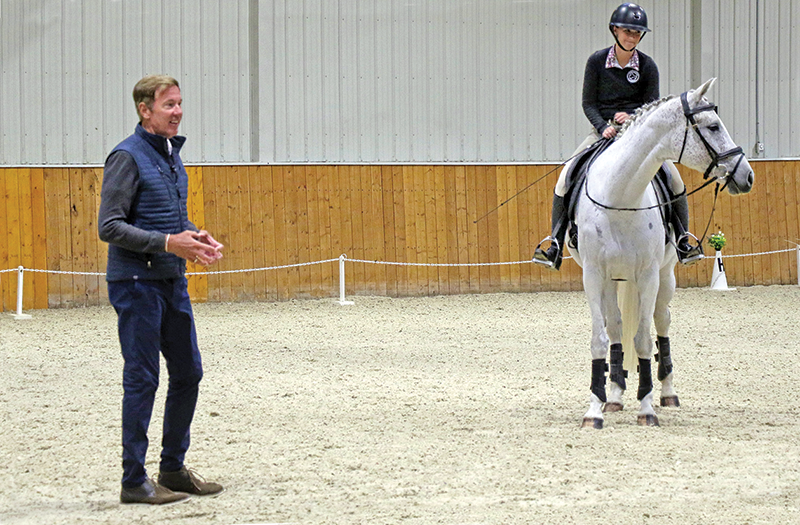
Becky Staden and her warmblood mare, with Peter Gray. Photo: Sonja Shank
Sharing Experiences
When asked to reflect on his experience at the World Championships, Gray says that it was a great privilege to be invited to judge. He also says that it’s reasonable for North American event riders to be competitive against Europeans; however, they need to become more like high performance athletes.
“All of our riders are trying to run a business and teach and give clinics and sell horses to afford to do the sport,” he says.
Those activities are required when riders don’t have financial backing, sponsorship, and high-quality horses. But they reduce the time riders spend training and managing equine athletes — imperative for those trying to reach the upper echelons. It’s a difficult quandary that provides a window into the top levels of horse sport that few will experience.
However, that was a side note to Gray’s most important message: no matter whether you’re training a young horse or a grand prix horse, it all comes down to basics — and they’re always the same.
Related: May I? The Role of Consent and Permission with Horses
Related: The Madden Method Symposium
Main Photo: Peter Gray with Julia Vysniauskas and her Hanoverian mare, ButterBlume. Photo: Sonja Shank



